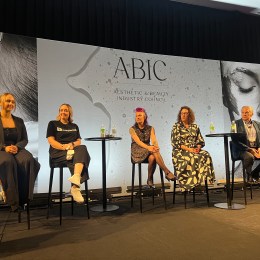How you can help your clients protect their skin and the environment this summer.
Australia is a sunburnt country. Poet Dorothea Mackellar penned the infamous line over 100 years ago, but today it’s taken on a new meaning. We have one of the highest incidences of melanoma in the world, and as a result, the importance of sun safety is engrained in a generation. Almost to the point where I can’t step outside without the phrase ‘tanning is skin cells in trauma’ ringing in my ears.
However, research is mounting to suggest one of the most popular methods of sun protection is causing a unique set of health problems. For the environment, that is.
Sunscreen has been linked to coral bleaching; the phenomenon where usually vibrant coral turns white due to environmental factors. It’s caused by high water temperatures, overexposure to sunlight and chemical runoff into waterways.
Daniel Isaacs, Director of Research at Medik8, says chemical filters used in sunscreen leaches into the water off swimmers and the coral then absorbs these chemicals.

“Due to the insanely long time it takes to bring a new [sunscreen] filter to market – and not to mention the extensive regulation needed – many cheap old filters are being used widely and routinely. Some of these traditional sunscreen filters have been detected in coastal waters either directly as a consequence of washing off swimmers or indirectly from wastewater treatment plant effluents,” Daniel said.
The primary and most damaging culprits are oxybenzone and octinoxate. When these chemicals enter the water, it lessens the coral’s defence mechanism against UV rays. What sunscreen does for humans, it does the opposite for coral.
What’s the solution?
‘Slop’ is only one of the five elements in the slogan ‘Slip, slop, slap, seek and slide’. Relying more heavily on shade, clothing, and hats are some of the ways you can reduce the amount of oxybenzone and octinoxate that enter the waterways. When these options aren’t available, a physical or ‘mineral’ sunscreen is the next best bet.
“Medik8 Physical Sunscreen uses mineral filter zinc oxide, with non-nano physical sunscreen filters. Nano-sized zinc oxide is defined as smaller in diameter than 100 nm and is often used in sunscreens because it’s easier to formulate with,” Daniel said.
Physical sunscreens use a physical barrier to block out the sun’s harmful rays. They work by deflecting UV rays away from the skin, unlike chemical sunscreen which absorbs the rays into the body and converts them into heat. However, not all physical sunscreens are created equal. The size of the physical barrier is essential when it comes to coral health.
“Nanoparticles have been linked with safety concerns, and nano-sized zinc oxide has even been linked with disruption to coral reefs. Therefore at Medik8 we only use non-nano forms of zinc oxide,” Daniel adds.
How can I tell if my sunscreen is reef safe?
In Australia, there are no regulations around ‘reef-safe’ sunscreen, meaning a formulation does not have to meet specific requirements to earn this label. The only way to gauge whether a sunscreen is reef safe is to flip the bottle over and look at the ingredients. Chemicals like oxybenzone and octinoxate are a big no-no. When it comes to things like nanoparticles, that is a question best directed to the brand itself.





